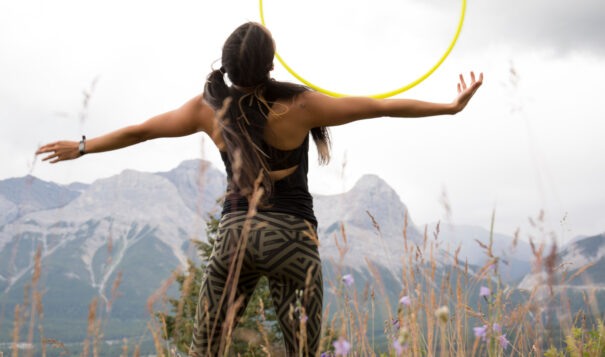News Based on facts, either observed and verified directly by the reporter, or reported and verified from knowledgeable sources.
The Next Generation in Native Culture is Keeping Traditional Dance Alive From South Dakota Tribal Land to Viral Social Media Posting

Everything we see and experience in our daily lives is the product of history and culture. Art, dance, and fashion are all influenced by the culture around us, which is often reflected by the use of vibrant colors, unique sounds, and choreographed movements. For generations, Native people have passed down the tradition of dance – with many themes spanning celebratory, religious, and cultural significance. Native American Heritage Month often brings a lot of exposure to creative and meaningful dances practiced among the Native community, but these dances are a timeless honor and tradition passed down among tribal communities all year long.
Dances in Native culture have significant meaning, like the Hoop Dance. Hoop Dances are a form of dance that tells a story, incorporating hoops to create static and dynamic shapes, which often represent the movements of animals. These hoops, which have no beginning or end, represent a deep symbolic meaning of never-ending life. There are several legends surrounding the origin of the Hoop Dance, with stories originating from the Northern Plains to the Southwest, and even that it originated in the Anishinaabe culture when an unearthly spirit was born to live amongst the people.
Today, Hoop Dances are typically started by a solo dancer and a single hoop, with additional hoops added to represent other life elements. The dance evolves as rapid movements and more hoops are incorporated, used to form extensions of the dancer’s body to form appendages like tails or wings.
In “If Cities Could Dance,” a PBS Digital Studios publication, showcases Micco and Samsoche Sampson, “the Sampson Brothers,” performing traditional Hoop Dance formations in front of the Minneapolis American Indian Center, on the Mississippi’s Stone Arch Bridge, and underneath the Hennepin Avenue overpass. Through Hoop Dance, the Sampson Brothers ensure that this time-honored tradition withstands the test of time.
Another popular and more well-known form of Native dance is called Fancy Dance. These dances have become a popular form of competitive dance in inter-tribal pow wow gatherings and are identified by the use of colorful feather bustles and head pieces, beaded bodices, leggings, moccasins, and other colorful adornments. The dance itself is fast-paced, colorful, and energetic – requiring a lot of stamina and strength for dancers to maintain the athletic movement and length of the dance.
Max Sevier, a 21-year-old fancy dancer from South Dakota’s Rosebud Sioux Tribe, has been dancing since he was two years old. Of his 19 years dancing, 17 have been spent competing at pow wow gatherings across the region. Although fancy dances are a tribal tradition, Sevier has brought a lot of exposure to the dance culture by going viral on TikTok.
“Experience the Lakota people culture or just Native culture in general, that’s the biggest thing I think people should take away from it.”
Max Sevier, SiouxLand Proud
Through dance, the Sampson Brothers and Max Sevier use traditional Native dance to keep history alive – even if they use modern means of distribution to bring about exposure. The new generation is using innovative means of bringing history alive and keeping the traditions of their ancestors accessible through video, social media, and even podcasts – like Indigenous YOUth Nation.
“We’re still here. We’re not a group of people who have died off in history books. That’s the one thing I really didn’t like about growing up and learning about Natives in school is that it’s mainly taught in a way of ‘these people aren’t still existing.’ We’re still here. We’re resilient, and this is our land.”
Max Sevier, SiouxLand Proud
References:
“Fancy dancing: A Native American tradition for South Dakota tribes," SiouxLand Proud, Lauren Soulek, November 14, 2022, https://www.siouxlandproud.com/news/south-dakota-news/fancy-dancing-a-native-american-tradition/
Native American Dances and Meanings, Guest Post, November 18, 2022, https://hankeringforhistory.com/native-american-dances-and-meanings/
Native American Dance Tradition, Podcast, Season 4, Culturally Ours, March 3, 2020, https://culturallyours.com/podcast/native-american-dance-tradition/
